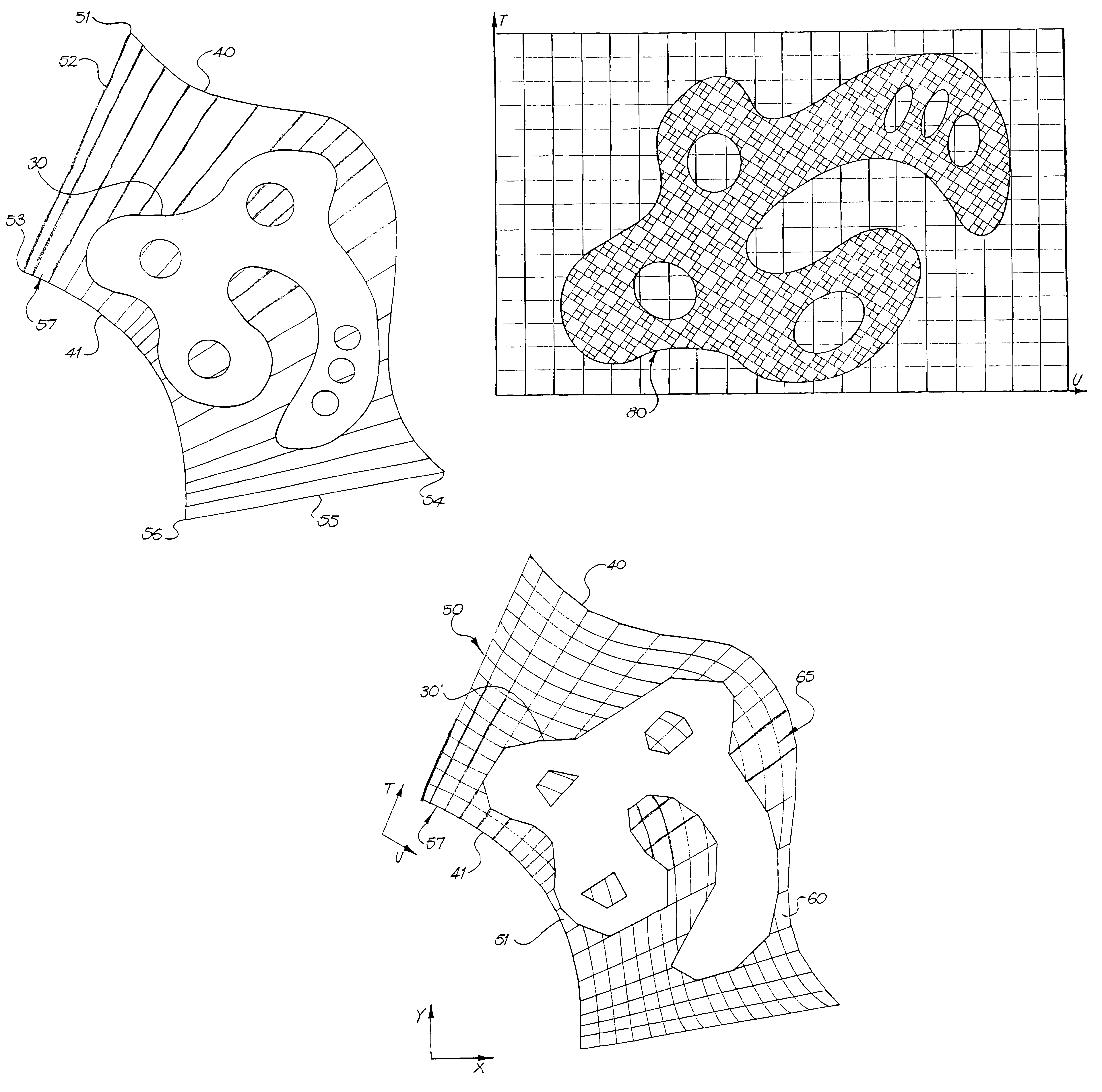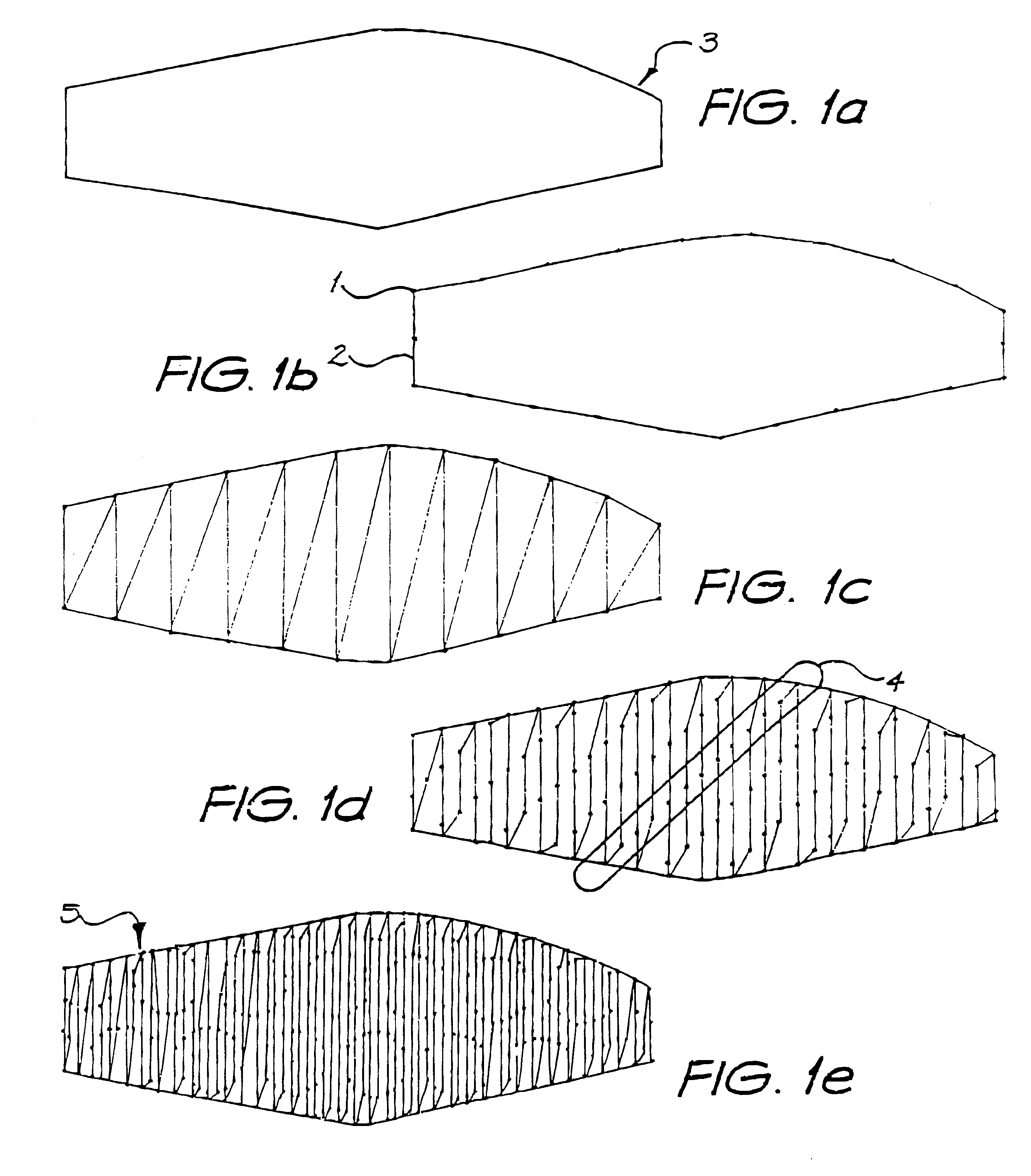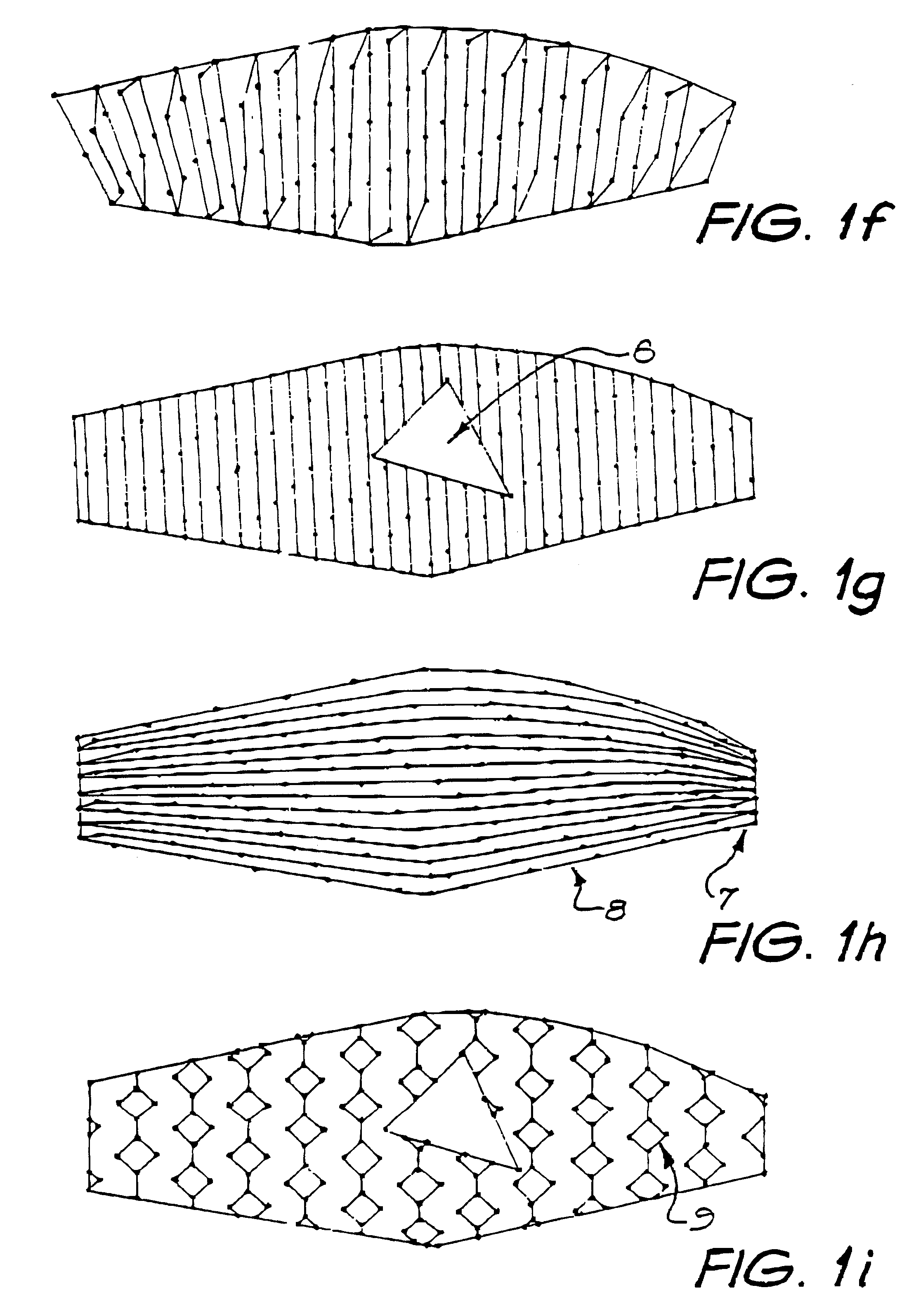Curved line fill stitching in embroidery designs
a technology of curved lines and embroidery designs, applied in embroidering machines, automatic machines, embroidering machines, etc., can solve the problems of complex shape 10, embroidery designers can't use curved lines to fill areas very much, and cannot do a good job of automatically filling areas with a series of automatically calculated curved lines
- Summary
- Abstract
- Description
- Claims
- Application Information
AI Technical Summary
Problems solved by technology
Method used
Image
Examples
example 2
A Single Curve is Entered
This variation of the invention uses almost the same steps as above, with a few exceptions. First, only one curve 180 is specified, as can be seen in FIG. 18. However, two stitch definition curves are still used in the calculations, but they are calculated based on the single stitch definition curve specified, in a manner described below. The curves are calculated such that a uniform stitch density is provided across the shape being filled.
Now we discuss the problem of generating curved stitching on a complex-fill shape from a single stitch definition curve. The technique is to derive from this single curve 180 two new stitch definition curves which bound the complex fill region; the stitching is then generated using the two-curve form of the invention, i.e. following u-co-ordinate lines between the two new curves.
The two new curves meet two key requirements; they are chosen in such a way as to minimise the variation in the distance between the U-co-ordinate...
PUM
 Login to View More
Login to View More Abstract
Description
Claims
Application Information
 Login to View More
Login to View More - R&D
- Intellectual Property
- Life Sciences
- Materials
- Tech Scout
- Unparalleled Data Quality
- Higher Quality Content
- 60% Fewer Hallucinations
Browse by: Latest US Patents, China's latest patents, Technical Efficacy Thesaurus, Application Domain, Technology Topic, Popular Technical Reports.
© 2025 PatSnap. All rights reserved.Legal|Privacy policy|Modern Slavery Act Transparency Statement|Sitemap|About US| Contact US: help@patsnap.com



